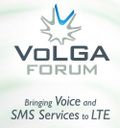 A main feature that is missing in LTE so far is a viable standardized system for voice calls for the short and medium term. Sure, 3GPP has specified CS fallback and many network operators are hoping for IMS in the long-term. However, in my opinion, both leave LTE very exposed on the voice front at least over the next couple of years.
A main feature that is missing in LTE so far is a viable standardized system for voice calls for the short and medium term. Sure, 3GPP has specified CS fallback and many network operators are hoping for IMS in the long-term. However, in my opinion, both leave LTE very exposed on the voice front at least over the next couple of years.
That's why I am a fan of VOLGA, short for Voice over LTE via GAN as it offers a smooth way of connecting the already existing voice infrastructure to LTE. I've already voiced my thoughts on it here and here, but blog posts can't really go into the technical details. So with the kind support of Kineto Wireless, I've assembled a whitepaper about VOLGA to describe how it works and its advantages and disadvantages compared to other voice over IP systems for wireless networks. So if you have a bit of time and are interested in the details, have a look and enjoy!
Martin,
If I read this correctly, IMS will take years to implement where as VOLGA could be ready with little to no change in infrastructure.
Can you elaborate on the time requirements for VOLGA rollout versus IMS rollout and a realistic timeline if VOLGA were to be selected?
Thanks,
Giff
Martin
A question on the IPsec established between the Ue and VANC. Has there been any consideration on the power consumption of this type of connectivity? In 3G/2G, the Ue consumes very little power during idle mode.
Regards,
V.
Hi Vincent,
a good question and I think the answer comes in two parts:
1) In general there’s the big question of how efficient the OFDM interface will be in practice in both active and idle mode. When comparing GSM and UMTS, there is not a big difference anymore in idle mode. So I would cautiously apply that to LTE as well. Active is another matter, but we are only dealing with idle mode here.
2) Does the IPSec Link need keep-alive messages and if so, how often do they need to be sent. I assume, but I don’t know for sure, that only little keep-alive signaling is required for the IPSec link. More investigation needed to be certain.
Cheers,
Martin
Hi Giff,
I think in the network, the VANC will probably be available quite soon, as it is just an extension of the already existing GANC. Definitely at launch of the first LTE networks.
On the mobile device side, things for voice will probably be a bit slower as first LTE devices are most likely to be dongles and VOLGA’s use is mostly limited to SMS there. But as device manufacturers are working on post-dongle devices, I think the protocol stack can be there quite quickly, too, as again, it’s a derivate of the GAN code with some extensions. So with a bit of luck, we could see VOLGA mobiles right there among first LTE post-dongle devices.
Cheers,
Martin
Martin,
The availability of mobile devices is pegged to fully mobile version SoCs and programmable chips. Vendors say that they see rapid progress, both for their own and their competitors developments – the latter probably being a more reliable indicator.
Pre-production sampling and work with device suppliers is going on in concert with chip development. production parts should be available starting this year. mainstream suppliers including Qualcomm may take a bit longer due significantly to the scale they need to ramp… and maybe a bit just due to their large size (elephants take more time to get up to speed than the mice under their feet). ST-Ericsson is tracking similarly. Both will supply LTE plus 3G modes. Smaller suppliers aim to achieve a time to market advantage: announcements will come out very shortly.
How soon mobile devices can enter the market depends on time needed to achieve certifications on various early LTE networks. Verizon has a very short time line for certification of devices, just a 2-3 weeks upon submittal, but time for compatibility between network and other device suppliers always takes much longer. As an analyst, I have to be careful about the projected time lines. History teaches they are often just a wee bit optimistic!
Martin
Not sure why is IPsec needed here? Isn’t LTE already quite secure compared to WiFi.
Ajay
Hi Ajay,
LTE security is only ensured between the base station and the mobile device. Everything behind it is optional. So from my point of view, using an encrypted tunnel right up to the gateway is a good thing to do. On top, it’s also used in GAN so there’s no extra development needed for it.
Martin
Martin
Newbie here. Is this simultaneous Voice over LTE while in a data call or just voice over LTE
Thanks
Stephan
Hi Stephan,
yes, the voice call runs alongside other data transfers that are ongoing. In other words: For the LTE network, a VOLGA call is just another stream of IP packets running over the link, that might or might not be treated with a special QoS attached. Also, the operator can choose to run VoLGA in a separate simultaneous bearer.
Concerning the data call / packet cal: These exist no longer in LTE, have a look here:
http://mobilesociety.typepad.com/mobile_life/2008/03/the-packet-call.html
Martin